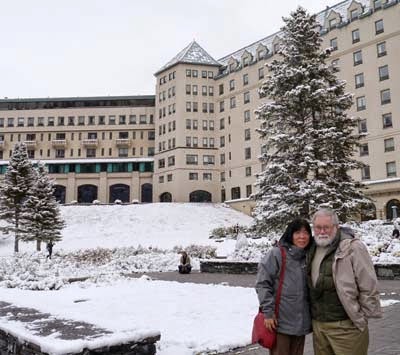 |
| Bear Creek, Great Bear Wilderness, Montana |
 |
| Fall color on the Big River Trail, Great Bear Wilderness |
After
crossing back into the United States at Chief Mountain our plan was to stay at a
campground in the Flathead National Forest right on the border of Glacier
National Park. But when we arrived we
found that the campground was closed for the season. Many forest campgrounds close early in the
northwest. As our time in Canada proved
this year, snows can come early! Luckily
we found a nice commercial campground only a few miles away that suited our
needs perfectly. We were relieved as we
had been looking forward to hiking in the Great Bear Wilderness, our 20th
wilderness to visit so far this year.
Located
west of the Continental Divide, the Great Bear Wilderness is south of Glacier
National Park across US Hwy 2 and shares its southern border with the Bob
Marshall Wilderness. Montana’s wildest
river, the designated ‘wild and scenic’ Middle Fork Flathead River, has its
origination point in the Great Bear and runs 50 miles through the wilderness. The 286,700 acres of the Great Bear are prime
grizzly and black bear habitat.
Our
trail was called the Big River Trail and it crossed Bear Creek, then climbed
above and loosely followed the Middle Fork Flathead River deep into the
wilderness for over 25 miles. We only hiked
in about 4.5 miles to a quiet spot high above the Middle Fork Flathead River
where we had a nice lunch enjoying the quiet beauty, solitude and beginnings of
fall color. Although we hiked close to 9
miles, we left the wilderness refreshed and rejuvenated. (OK, so maybe not our leg
muscles…) Except for the two fishermen
we saw at Bear Creek, we saw no one. It
was truly a wilderness experience.
Rain
fell during the night and the next morning we woke to overcast skies and
drizzle. Since the forecast was for rain
all day, we decided to move on to Kalispell and wash all our clothes after
almost 3 weeks in Canada. Things were
getting pretty rank…
While
we were cleaning up in Kalispell, we took one day off for another hike in the
Jewel Basin. We enjoyed our hike there a
month ago so much that we wanted to take another one. This time we skirted the basin on the west
side taking the Twin Lakes Trail into the basin. While the views weren’t as spectacular as
they were from our first hike up Mt. Aeneas, it was still a very scenic
trail.
 |
| The Twin Lakes |
 |
| North Twin Lake |
We are heading into Idaho now. It is a state we have really only driven through, so now we are going to take about a week on our way to the Grand Tetons and get to know Idaho a little. There are at least a couple of wildernesses we are going to try to explore.
David's
Stats:
Days Hiked 2
Total Miles Hiked 16.69
Ave. Miles per Day 8.35
Total Elevation Gain 2,933
Ave. Elevation Gain per day 1,467
Days Hiked 2
Total Miles Hiked 16.69
Ave. Miles per Day 8.35
Total Elevation Gain 2,933
Ave. Elevation Gain per day 1,467






























